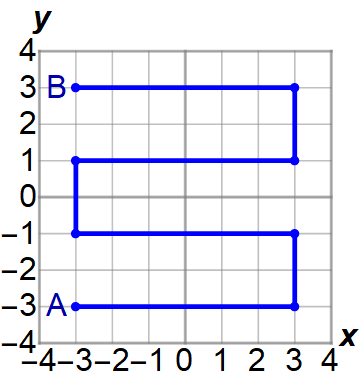These are pretty much universally called lattice paths, which Will Orrick comments on the question.
A quick search on the arXiv reveals a large number of papers from combinatorics and computer science using the term in this way. (The main competition is from papers about path integrals on lattices, which gets unfortunately concatenated to "lattice path integral.") For examples from published literature, this Google Scholar search is a good start.
The jargon is not exactly localized to combinatorics and comp sci either; here, for example, is a probability paper using the same terminology.
Finally, Wikipedia's article on lattice paths has picture with a path moving diagonally; this generalization is an unusual use of the term.

